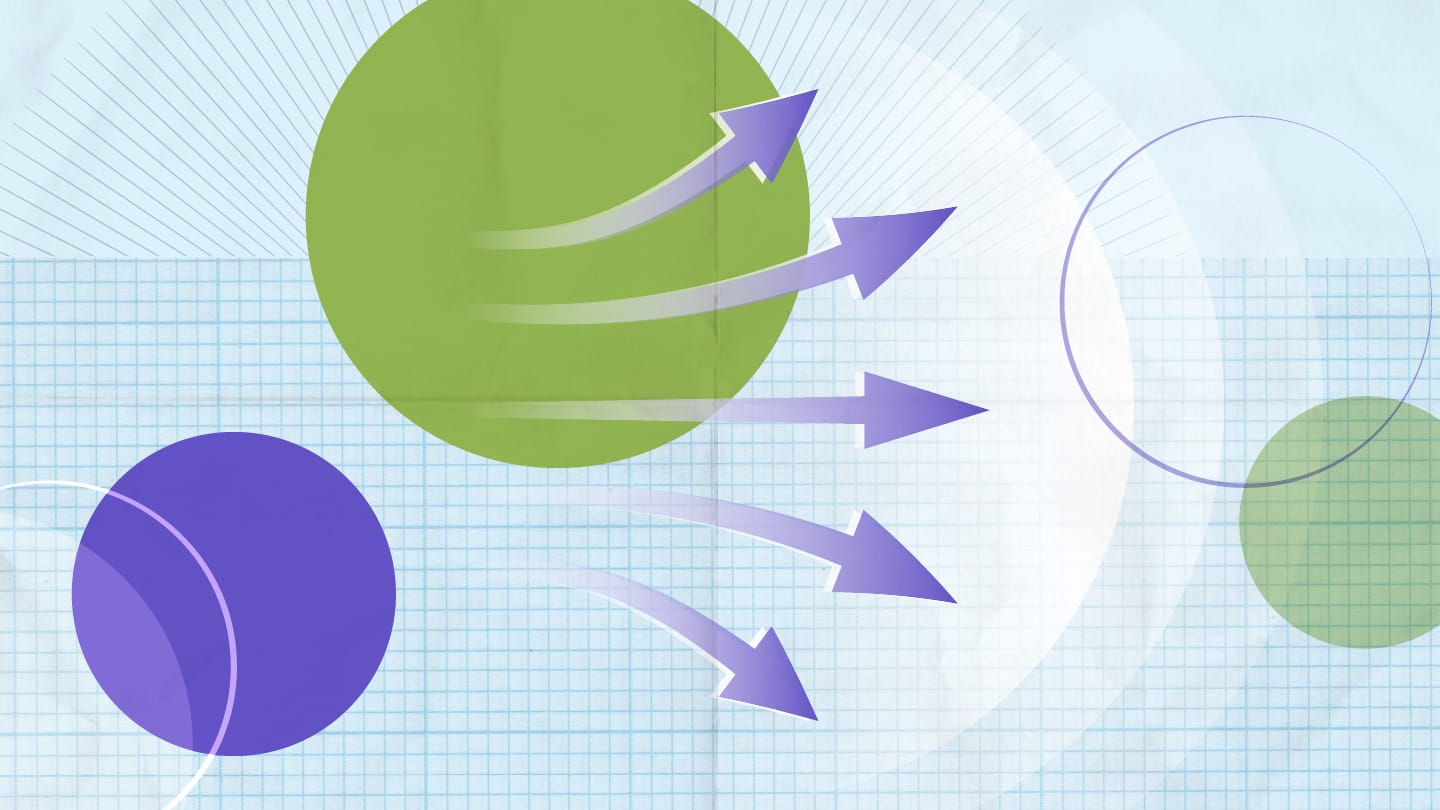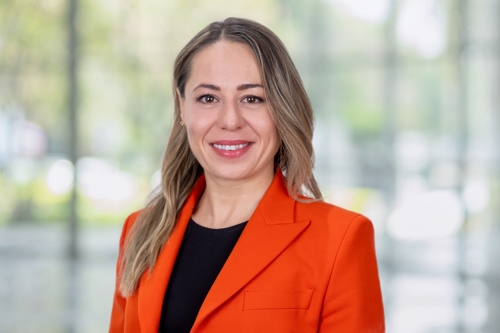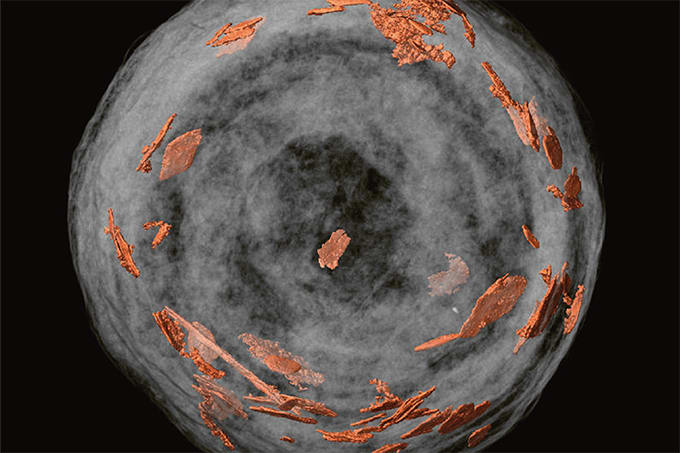
Over the last fifty years, science has shifted its focus from the small to the large, from simple molecules to complex assemblies. We’ve transitioned from working with basic raw materials to engineering polymers and macromolecules, from aspirin tablets to protein and peptide injections, and now to mRNA-loaded nanoparticles and lipid carriers. At the same time, environmental concerns have evolved – from lead in petrol to the accumulation of micro- and nanoplastics in the food chain. In every field, the challenge is no longer just about identifying molecules, but rather understanding the assemblies they form, their interactions, and their dynamic behaviors. This shift toward assemblies is not niche, it’s been recognized at the highest level, as evidenced by recent Nobel Prize winners highlighting molecular assemblies and supramolecular chemistry.
Field Flow Fractionation (FFF) sits at the intersection of the nano, micro, and macromolecular worlds. The nano-frontier is where biology, medicine, and materials science converge, and FFF is one of the few tools that enables us to make sense of it. It allows us to study fragile and dynamic assemblies in their native state without the shear forces or surface interactions that may distort them in chromatographic techniques.
If we want to design safe vaccines, effective protein drugs, or understand how plastics move from drain to dinner plate, we need techniques that can keep pace with the complexity. That’s why FFF deserves attention.

FFF comes into its own
FFF refers to a family of separation techniques that fractionate macromolecules and particles by size, density, electrical charge or chemical composition – under the influence of an external field. The technique was introduced almost 60 years ago by J. Calvin Giddings. His idea was to separate molecules not by how they interact with a column, but via response to an external field. In his words, it was a “chromatographic system in which retention is controlled by an applied field, not a stationary phase.” The most widely used version today, asymmetrical flow FFF (AF4) – co-developed with Karl-Gustav Wahlund in the 1980s – uses a crossflow field applied over a semipermeable membrane. Their 1987 paper on the asymmetrical channel design – with one permeable wall – laid the groundwork for what many of us still use today (1).
FFF provides insights that might otherwise be missed or misinterpreted. In analytical chemistry, our method shapes what we see – much like applying a filter to an image. I think it’s important to ask, “How much of what we see is a measurement artifact?” Of course, FFF is not a magic solution. It isn’t suitable for every scenario, nor am I suggesting it should replace other techniques. But it can be very useful when working with complex and dynamic systems, where it’s important that samples are analyzed in their native environment. It allows one to zoom out first and see the bigger picture at intact level, before zooming back into small fractions with other tools like proteomics.
In May 2026, we will mark the 60th anniversary of the first FFF paper with a dedicated symposium in Washington: a good moment to reflect not just on the past, but on where the technique is going. AF4 remains the most widely used sub-technique, and is especially suitable for samples that are fragile, dynamic, prone to aggregation or dissociation, or difficult to study with conventional techniques. This includes nanoparticles, colloids, and large, dynamic protein assemblies. It covers a broad size range, from a few nanometres to several micrometres, and offers considerable flexibility in mobile phases and sample matrices. The carrier solution can be selected to suit the specific sample.
Something I’m really excited about is the coupling of AF4 to SAXS – and now even to SANS. This provides size-resolved structural information, even on a sub-molecular level. AF4 can be coupled online to SAXS, providing an elegant way to characterize nanoparticle pharmaceutical formulations in real time and revealing how drug load and internal structure vary with particle size. This is highly relevant for pharmaceutical development, from both quality and safety perspectives. The ability to fractionate by size first – and then send only the population of interest into the beam – means you get clearer, more interpretable structural data, as well as far fewer artifacts than you’d get without having this size-based separation first or using traditional chromatography–SAXS setups. This combination is particularly useful for complex biomolecular assemblies, since it minimizes shear forces and avoids introducing extra surfaces that could disturb the sample. It’s also a clear advantage when dealing with very large analytes or samples that cover a wide size range. And by adding AF4–SANS into the mix, things get even more exciting. Contrast variation allows selective highlighting of specific components within complex assemblies, providing an additional layer of structural insight. My colleagues from the FFF community like Albena Lederer, Susie Boye and Lars Nilsson are working on this right now – and I expect we’ll be seeing some very exciting publications coming out soon.
AF4 is also widely used in biopharma. For example, AF4 data supported FDA guidance and helped secure approval for the first generic cyclosporine ophthalmic emulsions (2). AF4 has shown that it can detect subtle changes in manufacturing that other techniques miss – differences that are directly linked to product quality and safety. We also have colleagues on our FFF board who work in biopharma and at the FDA. Their work demonstrates how AF4 can provide detailed insights into complex formulations.
In biomedical research, AF4 online coupled to MALS and DLS has been applied to investigate prion protein assemblies directly from infected brain homogenates (3). Not only is this important for prion biology, but it also serves as a proof of concept for other neurodegenerative diseases where protein misfolding and aggregate heterogeneity play a role. Previous reports without AF4 fractionation suggested certain prion strains were structurally very similar, but this work displayed important differences. It demonstrated that strains with almost identical phenotypes and secondary structures actually differed in their quaternary structure, and that all strains undergo a structural shift around 15 nm linked to a loss of protease resistance. It also revealed that glycosylation profiles change with aggregate size in a strain-specific way – something earlier studies had missed. SEC would have struggled here, as sticky prion aggregates tend to interact with the stationary phase, and the technique typically fails to capture the largest particles. AF4, however, made it possible to capture the full size distribution and reveal these hidden layers of complexity.
Another application where AF4 shows advantages over SEC is in the case of LNPs and extracellular vesicles. It offers a broader fractionation range and better reproducibility across different formulations. This is especially useful when particle surface chemistry or size changes are subtle, allowing these differences to be tracked without compromising stability (4,5).
In cosmetics, standardized methods are being developed for nanoparticle analysis using AF4 with ICP-MS (6). The reason it stands out here is that it can handle the full complexity of real formulations – multiple particle types, wide size ranges, and sticky components that would otherwise interfere in a column.
Finally, AF4 is also relevant in the field of environmental analysis. In our recent work, we combined AF4 with pyrolysis gas chromatography-mass spectrometry (Py-GC-MS) to analyze nanoplastics in wastewater (7). This setup first separates particles by size, before Py-GC-MS shows which polymers are present in each fraction, meaning both size distributions and chemical composition are obtained in one workflow. A key advantage in this context is the ability to handle real wastewater samples – large volumes, very low concentrations, and all the sticky matrix components that normally complicate analysis. It’s still early days, and technical challenges remain, but the approach shows real potential to open new doors in a field that currently lacks standard methods.
Breaking the cycle
FFF hasn’t taken off like LC or GC primarily because it’s not a plug-and-play tool. The hardware is complex and expensive, making it less attractive for routine labs or in GMP environments. Until recently, only two small manufacturers supported the technique, and even now with bigger players like Waters involved, it still represents a very small fraction of their portfolio. Another issue is the lack of harmonization and standardization. To date, we only have four interlaboratory studies and two harmonized SOPs across applications – not enough if we want regulatory recognition. Variability in consumables, like ultrafiltration membranes, is also a real problem, as batch-to-batch differences can affect reproducibility in ways that are hard to control. Without more harmonized conditions and clear validation pathways, FFF will remain absent from FDA and EMA guidelines.
For me as an academic, the foundation is education and training. In general, chemistry students don’t hear about FFF during their studies – and if they do, it’s perhaps when they run into it in industry. This, combined with the lack of proper training, is the perfect recipe for frustration and dismissal of the technique altogether. I think this has to change. Once the technique is in the curriculum and people have early exposure, it will feel less intimidating, less “scary.” And if that goes hand in hand with updates in hardware which make it more accessible and less expensive, I believe FFF can finally move from niche to norm.
I see a clear gap: there are questions in research where FFF is really necessary and where other techniques simply aren’t as suitable. Despite this, the technique is sometimes dismissed as it’s rarely a simple plug-and-play solution. Globally, most students – and even many experienced scientists – have never been introduced to FFF. Some may hear about it at a conference talk or see an instrument at a booth, but very few actually get hands-on experience. It’s a classic catch-22: because FFF isn’t taught, it’s not widely used; and because it’s not used, it isn’t taught. It remains a niche technique, viewed as complex and expert-dependent.
That's why I joined the FFF International Network – to break that cycle. We want to make education and training more accessible, support and mentor scientists who are working with FFF, strengthen our outreach, and retain talented researchers who may otherwise leave the field.
Part of that is building a living community through the international network, organizing workshops, offering expert support, and making sure that both new and experienced users feel supported. It’s not just about attracting new people; it’s also about keeping the talent that’s already here motivated and connected.
For me personally, the reason I care about this is because it brings clarity in areas where we deal with a lot of complexity. In science, clarity means fewer artefacts and a better understanding of what’s actually in a sample. This is what drives my curiosity, and it’s why I feel connected to FFF. For me, supporting a technique that can give us a clearer view of complex systems, it’s my way of contributing to the field.
Readers who want to learn more can visit fffseparation.net, connect with our group on LinkedIn, or email me directly. You’re also welcome to attend our upcoming conferences; the next one takes place May 18–20, 2026, in Washington, D.C.
Alina Astefanei is an Assistant Professor in Analytical Chemistry at the Van ’t Hoff Institute for Molecular Sciences, University of Amsterdam, the Netherlands.
References
- Giddings et al., “Properties of an asymmetrical flow field-flow fractionation channel having one permeable wall” Anal Chem, 59, 1332–1339 (1987). DOI: 10.1021/ac00136a016
- Boye et al., “Collections from Nature Protocols” Nat Protoc, 19, 1 (2024). DOI: 10.1038/s41596-023-00946-0
- Qu et al., “Formulation characteristics and in vitro release testing of cyclosporine ophthalmic ointments” Int J Pharm, 544, 254–264 (2018). DOI: 10.1016/j.ijpharm.2018.01.012
- Cortez et al., “Asymmetric-flow field-flow fractionation of prions reveals a strain-independent structural transition” PLOS Pathog, 17, e1009703 (2021). DOI: 10.1371/journal.ppat.1009703
- Parot et. al, “Quality assessment of LNP-RNA therapeutics with orthogonal analytical techniques, Journal of Controlled Release, 367, 385-401 (2024). DOI: 10.1016/j.jconrel.2024.01.037
- Zhang, H., Lyden, D. “Asymmetric-flow field-flow fractionation technology for exomere and small extracellular vesicle separation and characterization”. Nat Protoc 14, 1027–1053 (2019). DOI:10.1038/s41596-019-0126-x
- Velimirovic et al., “Intra-laboratory assessment of a method for the detection of engineered nanoparticles in mouthwashes” NanoImpact, 20, 100233 (2020). DOI: 10.1016/j.impact.2020.100233
- Hayder et al., “Integrating AF4 and Py-GC-MS for Combined Size-Resolved Polymer-Compositional Analysis of Nanoplastics with Application to Wastewater” Anal Chem, 97 (28), 15216-15224 (2025). DOI: 10.1021/acs.analchem.5c01766




